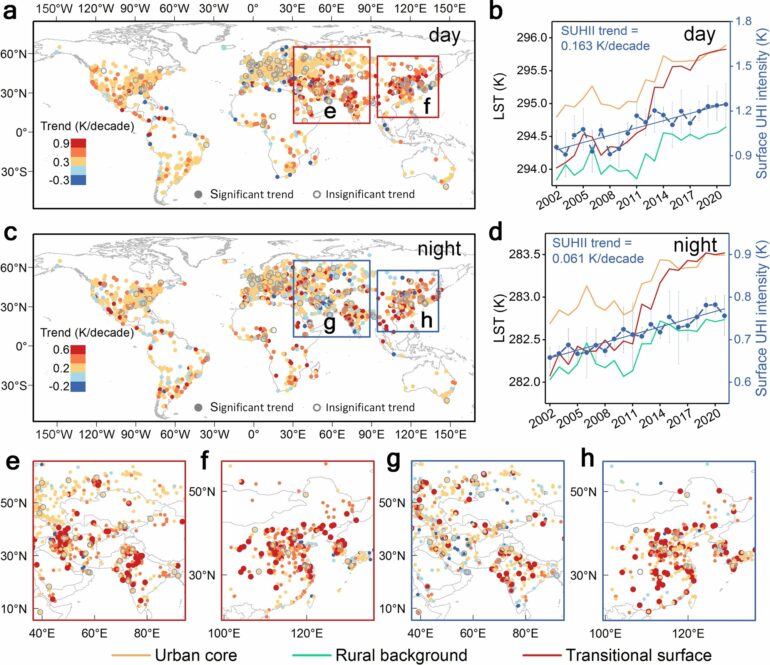Cities worldwide are warming by 0.5 °C on average per decade—29% faster than in rural areas—according to an article published online in Communications Earth & Environment. The findings suggest that climate change and urban expansion are accelerating urban surface warming. Planting trees and vegetation in cities—also known as urban greening—is reported to offset about 0.13 °C of surface warming per decade in European cities.
People who live in cities experience greater heat exposure during heatwave events than the general population due to the urban heat island effect, in which urban land gets hotter than surrounding rural land. Climate change and population growth in cities are projected to increase the surface urban heat island effect, but many current estimates of future human heat exposure assume equal rates of surface temperature increase between urban and rural areas. Urban greening is suggested to reduce surface warming, but whether it can slow the accelerating surface urban heat island effect remains unclear.
Wenfeng Zhan and colleagues analyzed satellite land surface temperature data for over 2,000 city centers worldwide between 2002 and 2021 and compared them to background rural surface temperatures. Very large “megacities” such as Abujia in Nigeria, Phoenix in the U.S., London in the U.K., São Paulo in Brazil, Beijing in China, and Moscow in Russia were included in the analyses.
The authors estimated that cities are warming 29% faster than rural areas, and that megacities are warming even more quickly. Overall, they estimated that climate change is the largest contributor to urban surface warming, increasing land surface temperatures by 0.30 °C per decade, on average. In China and India, they estimated that urban expansion was responsible for over 0.23 °C of the observed surface warming in cities per decade.
However, the authors also found that urban greening in European cities offset 0.13°C of surface warming per decade, indicating the potential of urban vegetation to slow down surface warming in cities. For example, increased urban greening in Chicago, U.S. was found to decrease the rate of surface warming by about 0.084 °C per decade.
More information:
Zihan Liu et al, Surface warming in global cities is substantially more rapid than in rural background areas, Communications Earth & Environment (2022). DOI: 10.1038/s43247-022-00539-x
Provided by
Nature Publishing Group
Citation:
Our cities are warming and urban greenery could help (2022, September 30)



